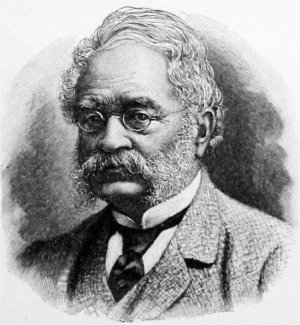<Back to Index>
- Inventor Ernst Werner von Siemens, 1816
- Writer Valery Yakovlevich Bryusov, 1873
- Field Marshal of the Austro-Hungarian Army Svetozar Boroëvić von Bojna, 1856
PAGE SPONSOR

Ernst Werner Siemens, von Siemens since 1888, (13 December 1816 – 6 December 1892) was a German inventor and industrialist. Siemens' name has been adopted as the SI unit of electrical conductance, the siemens. He was also the founder of the electrical and telecommunications company Siemens.
Werner Siemens was born in Lenthe, today part of Gehrden, near Hannover, Germany, the fourth child (of fourteen) of a tenant farmer. He is a brother of Carl Heinrich von Siemens and Carl Wilhelm Siemens, sons of Christian Ferdinand Siemens (31 July 1787 - 16 January 1840) and wife Eleonore Deichmann (1792 - 8 July 1839).
Siemens left school without finishing his education, but joined the army to undertake training in engineering. Siemens was thought of as a good soldier, receiving various medals. Upon returning home from war, he put his mind to other uses. He is known world-wide for his advances in various technologies, and chose to work on perfecting technologies that had already been established. Siemens invented a telegraph that used a needle to point to the right letter, instead of using Morse code. Based on this invention, he founded the company Telegraphen - Bauanstalt von Siemens & Halske on 1 October 1847, with the company taking occupation of its workshop on 12 October.
The company was internationalised soon after its founding. One brother of Werner represented him in England (Sir William Siemens) and another in St.Petersburg, Russia (Carl von Siemens), each earning separate recognition in their own right. Following his industrial career, he was ennobled in 1888, becoming Werner von Siemens. He retired from his company in 1890 and died in 1892 in Berlin.
The company, reorganized as Siemens & Halske AG, Siemens - Schuckertwerke and – since 1966 – Siemens AG was later led by his brothers, his four sons Arnold, Wilhelm, and Carl Friedrich and his nephews Hermann, Ernst and Peter von Siemens. Siemens AG is still one of the largest electrotechnological firms of the world.
Apart from the pointer telegraph Siemens made several contributions to the development of electrical engineering and is therefore known as the founding father of the discipline in Germany. He built the world's first electric elevator in 1880. His company produced the tubes with which Wilhelm Conrad Roentgen investigated x-rays. He claimed invention of the dynamo although others invented it earlier. On 14 December 1877 he received German patent No. 2355 for an electromechanical "dynamic" or moving - coil transducer, which was adapted by A.L. Thuras and E.C. Wente for the Bell System in the late 1920s for use as a loudspeaker. Wente's adaptation was issued US patent 1,707,545 in 1929. Siemens is also the father of the trolley bus which he initially tried and tested with his "Elektromote" on 29 April 1882.
He married twice, first in 1852 to Mathilde Duman (died 1 July 1867) and second in 1869 to his relative Antonie Siemens (1840 – 1900). Children from first marriage were Arnold von Siemens and Georg Wilhelm von Siemens. Children from second marriage were Hertha von Siemens (1870 - 5 January 1939), married in 1899 to Carl Dietrich Harries, and Carl Friedrich von Siemens.